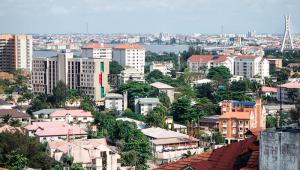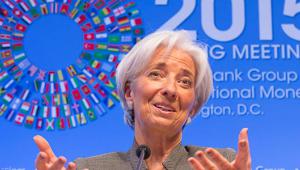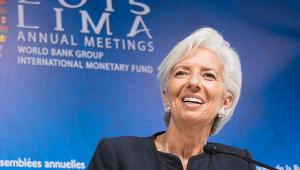By Richard Johnstone | 4 October 2013
Lower growth in developing countries reflect some ‘deep-rooted structural impediments’ in emerging economies that need to be addressed, the International Monetary Fund’s managing director Christine Lagarde has said.
Speaking in Washington yesterday, ahead of the IMF’s annual meetings next week, Lagarde said that ‘momentum is slowing’ in emerging markets, with growth 2.5 percentage points lower than in 2010.
Many developing countries were much stronger than in the past, and had led the global recovery in the last five years, accounting for three-quarters of total growth, Lagarde said.
However, further reforms were needed to reach what she called the ‘ultimate goal’ of economic growth in emerging nations – that living standards were closer to the advanced economies.
She said: ‘They can get there, but they face new obstacles in their way. Momentum is slowing, with growth 2½ percentage points lower than in 2010. A lot of this reflects the turn of the economic cycle, but part of it reflects deep-rooted structural impediments too.’
The ‘immediate priority’ must be to ride out current ‘turbulence’, which was more likely to be done through monetary policies and currency depreciation than government spending. ‘There is not much space left across many emerging markets for using fiscal policy, given high debt and deficits,’ she added.
Such changes would ‘not be fast or easy’, with emerging economies likely to need ‘the rest of the decade [to] adjust’.
In particular, there were many ‘profound transitions’ underway in low-income countries.
However if well managed, the countries could become ‘the frontier economies of tomorrow’, Lagarde said.
‘Sub-Saharan Africa is now the second most dynamic region in the world after developing Asia, and is getting ever closer to the beating heart of the global economy. Growth rates over the past several years have been around 5%.
‘Their transition, however, is not without risk. The low-income countries sit between the advanced country rock and the emerging market hard place. More fragility in these regions means more fragility in the low-income countries.’
Developing countries should ensure economic growth was more ‘inclusive’ across the population by boosting public investment and making sure all people have access to decent healthcare, education, and finance, she added.
The IMF will also release its latest economic forecasts in the next few days, which Lagarde hinted would show the global outlook remains ‘subdued’.
Although some ‘signs of hope’ were emerging in many of advanced economies, it was likely to take most of the next decade for the recovery to be complete, she said.













